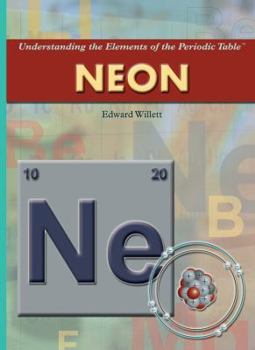Neon
Neon gets its name from the Greek word neos, meaning "new." Neon is a noble gas, it is colorless, odorless, and tasteless, and glows reddish-orange in a vacuum tube. Readers will learn about the three... This description may be from another edition of this product.
Format:Library Binding
Language:English
ISBN:1404210083
ISBN13:9781404210080
Release Date:January 2007
Publisher:Rosen Central
Length:48 Pages
Weight:0.75 lbs.
Dimensions:0.3" x 7.8" x 10.3"
Age Range:10 to 13 years
Grade Range:Grades 5 to 8
Customer Reviews
1 rating
"More than just a pretty light"
Published by Thriftbooks.com User , 15 years ago
I had thought neon would be a garish pink or green color, but when British chemists Ramsay and Travers finally separated neon from liquid air on May 30, 1898, and heated it, the gas glowed "a brilliant crimson color they'd never seen before." Neon, the tenth element in the periodic table is, as this author puts it "more than just a pretty light." It is also used in helium-neon lasers to read bar codes, and in Geiger counters and plasma TVs. The latter part this 48-page book for young adults (YA) is given over to an introduction to lasers and other devices that make use of neon. While author, Edward Willett follows the standard format for this YA series of books on "Understanding the Elements of the Periodic Table," he doesn't waste time on a general history of chemistry, but dives into the specifics of his chosen element and the discovery of the individual gases that constitute Earth's atmosphere, the noble gases in particular. It was quite interesting to learn how British chemists Lord Rayleigh (born John William Strutt) and later, William Ramsay actually isolated the individual elements of air. "Neon" does a good job of explaining the experimental techniques of chemistry in the 19th and 20th centuries. In fact, I found it to be one of the most interesting books in this series. For those readers who would like to further explore the mysteries of the periodic table, "Nature's Building Blocks: An A-Z Guide to the Elements" (2003) by John Emsley and "The Periodic Table: Its Story and Its Significance" (2007) by Eric R. Scerri are two very good treatments. For more general reading on the periodic table and how it sparked the interest of young scientists, two outstanding autobiographies are available: Uncle Tungsten (2001) by Oliver Sacks and The Periodic Table (1975) by Primo Levi. An understanding of how the elements were actually created, can be found in Marcus Chown's highly readable The Magic Furnace: The Search for the Origins of Atoms.





